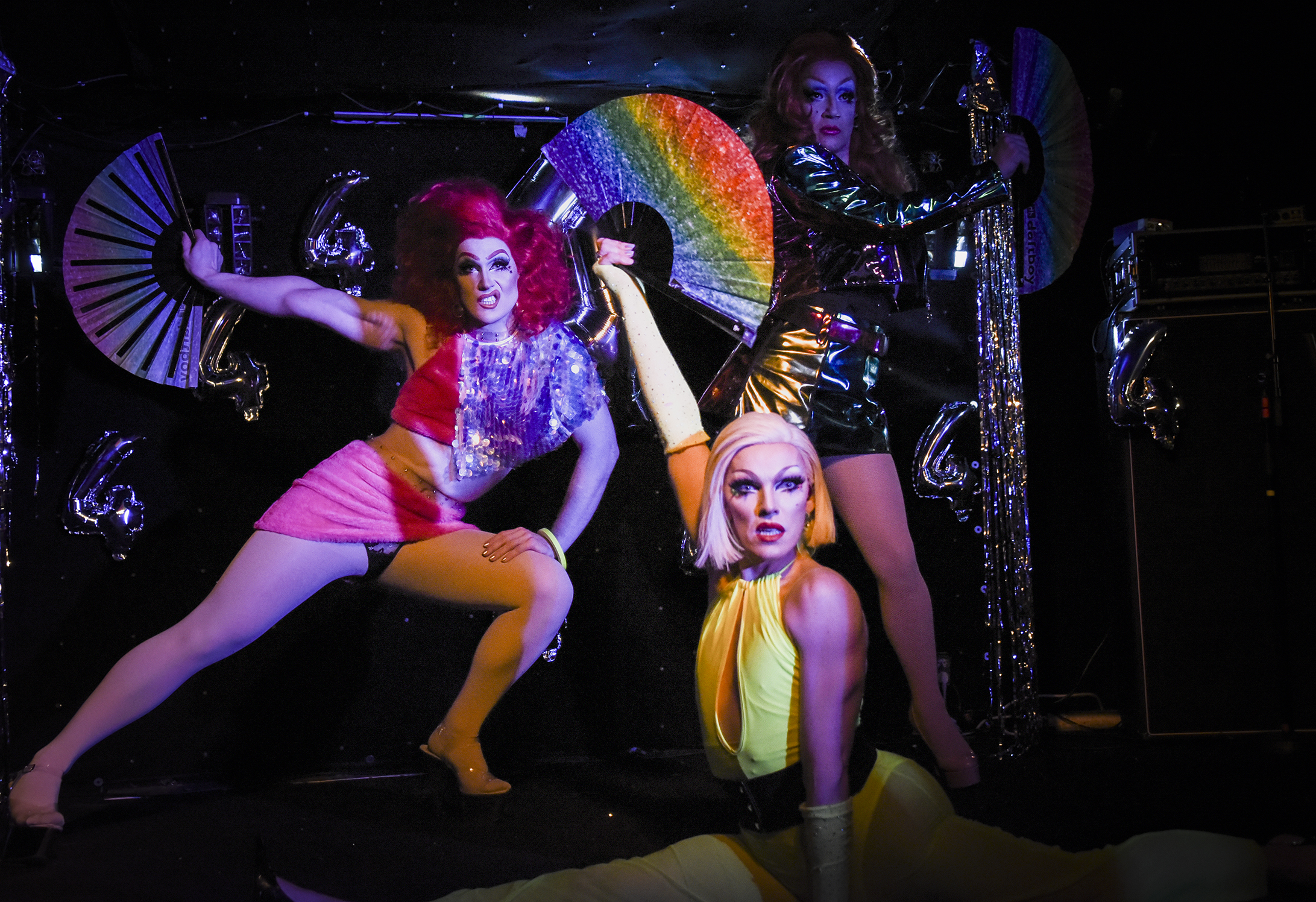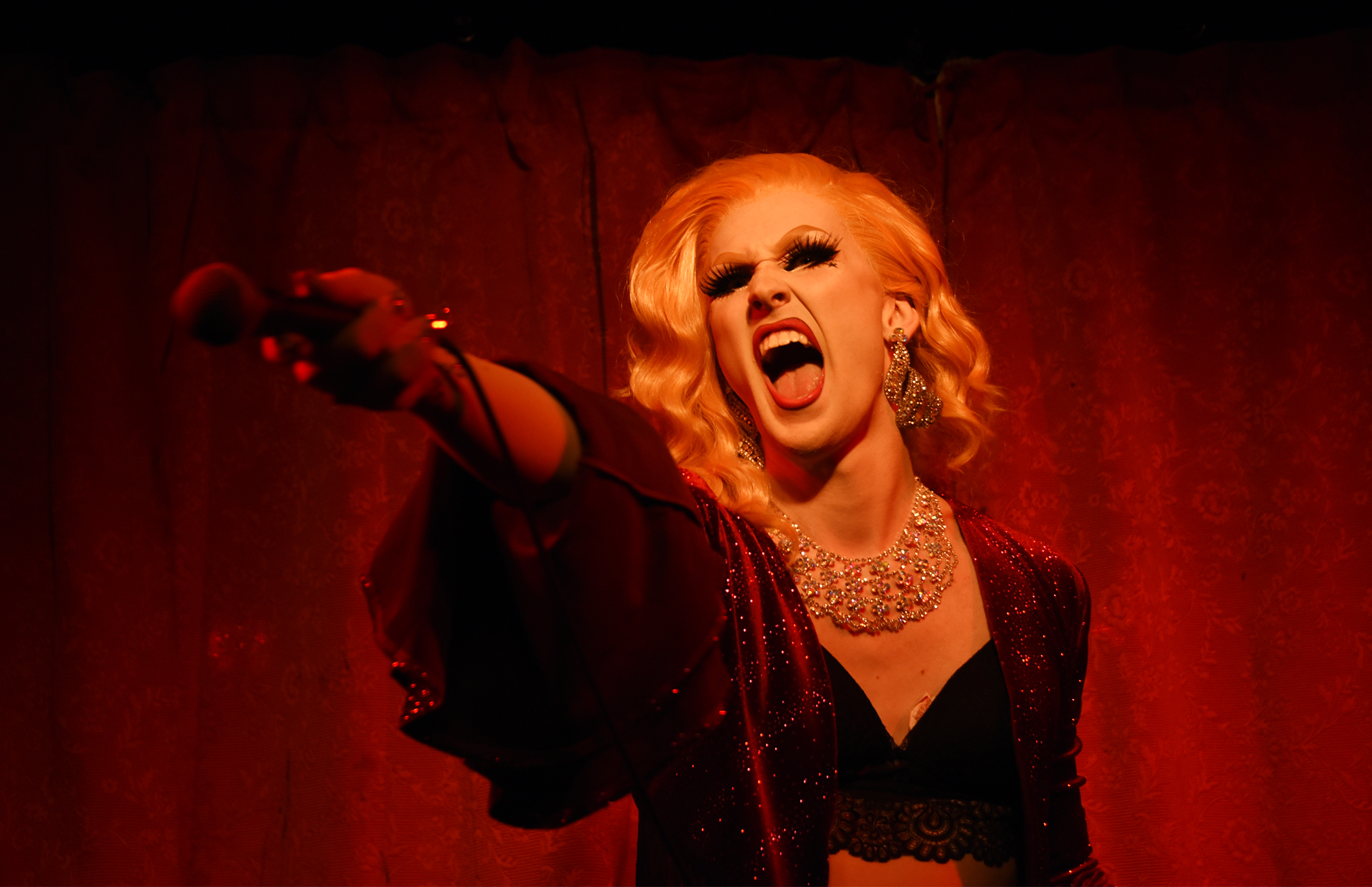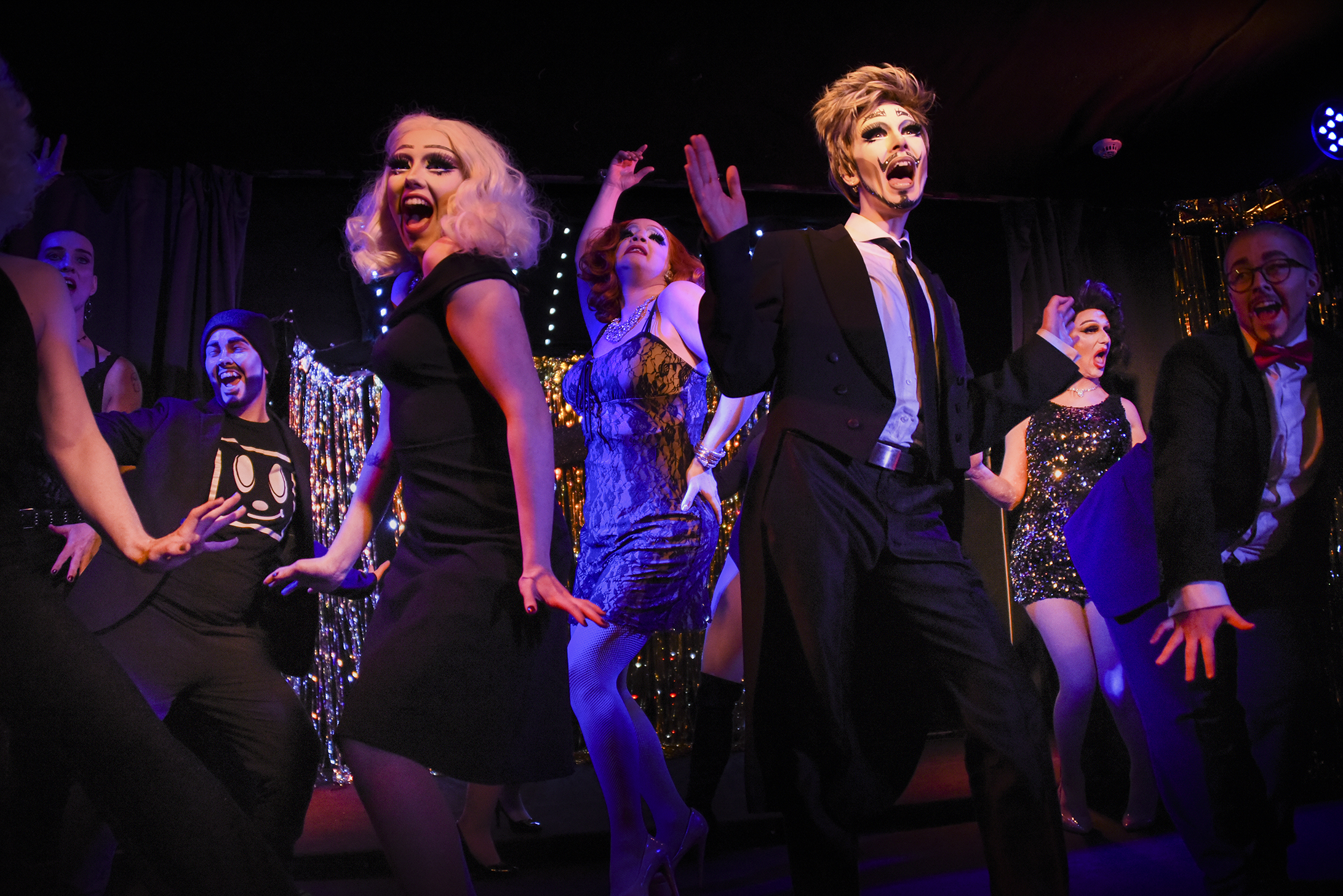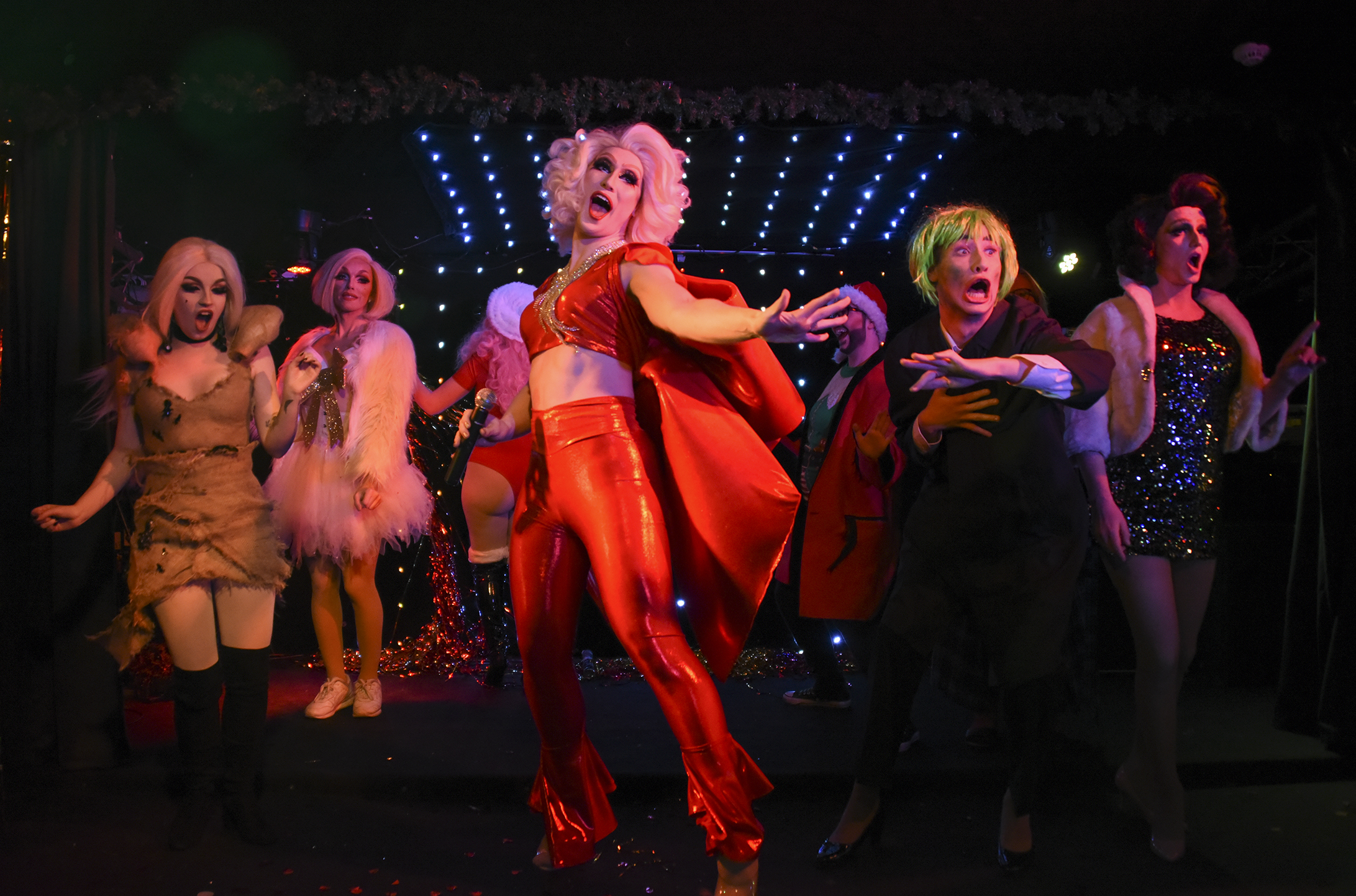Iceland is known for a lot of things. Volcanoes that stop Europe, The Northern Lights, Waterfalls, Björk, Sigur Rós and a whole bunch of other stuff. The fact is that this little island nation has been kicking goals in loads of arenas for years. Iceland has become a bit of a hub for a particular creative industry that those who don’t live here might not be aware of. For the past 6 years, Iceland has been going through a Drag Renaissance.
A whole bunch of Drag Kings, Queens and queer performers have cut their teeth on the Reykjavík Drag Scene and today there are a number of incredibly strong and sought after performers who owe their livelihoods to this performance community that made waves where many others would drown.
The current drag scene’s evolution began with a night back in 2015 that would change the performance landscape of this little island nation in the Atlantic Ocean, and after years of giving to the community, this evening is about to turn off it’s stage lights for good.
Before these performers take their final bows as members of the first and foremost Drag Night in Iceland, I sat down with one of the night’s founders to discover what is Drag Súgur? How did it begin? And why is this northern swan about to sing its final song.
“We never really had a big overall plan. It just sort of organically evolved.”
Sigurður Starr Guðjónsson might not be a household name in Iceland but most people are familiar with his alter ego ‘GoGo Starr.’ GoGo is a Drag Queen synonymous with glamour, humour, and the tour de force monthly Drag night known as Drag Súgur. Sigurður’s journey from small town boy to Drag Superstar began in the mid 2000s.
GayIceland: “So how did you originally get into drag?”
GoGo: “I grew up in Akureyri and as I was growing up there wasn’t really anything queer around me. I first got into drag in a theatre production during school. I was given this role in drag and without even realising it at the time, it was sort of this outlet for all of my feminine behaviour and everything I had been holding back. It was the first time I had experienced the feeling of celebrating those qualities. It was a big turning point for me. I learned a lot from my drag character.
Slowly but surely I started doing it more often, because I enjoyed it a lot. I loved performing and entertaining people. It really kicked into high gear when I moved to Reykjavík in 2014. I thought to myself ‘This is a big city and I’m gonna do big things,’ but at the time, none of that was happening at all.”

GayIceland: “So nothing was happening at the time. Talk us through the genesis of the current drag scene. How did it all kick off?”
GoGo: “There were drag shows in the 90s and early 2000s and they just sort of died out. Honestly I think it didn’t just happened here in Iceland, those kinds of shows sort of died out on a global scale too.
Then in 2015, it was a magical year. I entered the drag competition of Iceland and naturally I won (laughs). The main reason I entered the competition was basically just that it was the only real drag thing happening in Iceland. But after the competition I decided that I wanted to create something more. I wanted to create an opportunity for people to perform. I wanted to make it possible for people to have more opportunities to be on stage and to have fun.
There was a group of guys that had formed on Facebook through the group ‘Hommaspjallið.’ It had eventually moved over to a meet up in person. The main purpose of the meet up was for queer men to meet each other in a public setting without the point being solely to fuck someone. It was a chance for people to ask questions across generations; because I think that was something lacking in the local queer community. Through these conversations and meeting these people, it was validating but it also let me meet other people who were into drag. I met two other people who were really into it.”
The two people GoGo is referring to are Þórhallur Hafþórsson, who would later become one of the original showrunners and Hafsteinn Himinljómi Regínuson, who went on to perform as the Drag Queen, Ragna Rök.
“We birthed a whole scene. We’ve seen so many incredible performers come from it and I would really like this to just remain a legendary moment.”
GoGo: “Þórhallur mentioned that he had just gone on a date with this Australian comedian guy who might be able to help us put together a show.”
Full disclosure, that Australian comedian was me, the guy writing this article (Jono Duffy).
GayIceland: “Oh yeah, I always forget it was because of a date.”
Gogo: “Yeah it was. And then a couple of other people joined our group and we managed to book this lovely venue called Gaukurinn, which was this bar that also held nights for rock, metal and poetry slams. It was basically a venue that was all about things that were alternative. We suggested doing a drag show and Gaukurinn basically said ‘Love it. Get in here!’
Then we put up our first show with a small admission fee of about 1000kr. I still remember the poster for that show.
We even had Páll Óskar perform. He was like ‘Sure I’ll do a cameo for sure’.”
For those that aren’t familiar, Páll Óskar is a very famous pop star in Iceland, he’s also openly gay and a vocal gampaigner and supporter of the Queer community in Iceland. He’s also incredibly busy most of the time, so to have him headline the first show was no small accomplishment.

GoGo: “Everything basically happened as soon as we started talking about it. It all materialised so fast that I was kind of wondering why this hadn’t happened sooner.”
GayIceland: “Do you think that’s something that is quite unique to Iceland? Is it a country where you can really make stuff happen? You can have an idea and people will get on board.”
GoGo: “I think for sure. In a place like New York, you might book a venue and get a few drag artists to perform and maybe a couple of people will show up in the audience. Like it’s such a hussle. Here in Iceland, first of all we had Queens and Kings and circus performers and all kinds of people. The original idea was for it to start as a queer cabaret, but over time it evolved into a more specific drag show.
Secondly, I think it worked really well because we all wanted the same thing. We had to really work together to get what we wanted. I also thing the queer scene in general were not actually the ones who first showed up; it was the Drag Race audience who initially came to support us. This audience is most often straight women between 25 and 35. Our first audiences were them and tourists.
It was pretty successful straight away. It almost sold out that first night and that was when we decided that we just needed to keep this going.”
Over time the night’s became so popular that more and more performers wanted to be a part of it.

GoGo: “Eventually as we kept doing shows, more and more people contacted us wanting to get involved and over time we had too many to keep them all in this one night a month show. So then Drag Lab was born to be a second show, and then another night was started to be more of an open mic for those who wanted to take their first baby drag steps or try out material.”
GayIceland: “And can you explain the name of that first drag night to those who don’t speak Icelandic?”
GoGo: (laughs) “It’s so stupid. I mean honestly Drag Sugar would make more sense. But it’s not Drag Sugar, it’s Drag Súgur. I’m obsessed with ridiculous Icelandic puns. A ‘súgur’ is a very specific type of draft or breeze. It’s the kind of cold wind that comes in through a window or creeps in under the door. So the idea of it was that DragSúgur wasn’t going to just be in one location, it was going to move around and could basically creep in anywhere. But we just got really comfortable in Gaukurinn and it just became our home.”
GayIceland: “So from that first night to now, how did the Drag Súgur nights chance over almost 6 years?”
GoGo: “I think the way it started was people coming from their corner of Iceland with their idea for a number. The show was basically a collection of separate isolated performance pieces. As time went on we slowly but surely built a community around it. There was a lot more collaboration and discussion. There were group numbers and duets. We wanted to keep making things bigger and grander. Also in Iceland you often get a lot of the same people showing up to watch the show each time, so you always think that you can’t do the same thing again so people kept wanting to do something new each time. I mean in reality you don’t have to, you can just keep perfecting the act you have but people wanted to keep pushing themselves.
We never really had a big overall plan. It just sort of organically evolved. Over time more people joined the community and then I think it really elevated drag and people’s ideas of drag locally. Like you of course had the drag race fans coming to the shows and they had a certain idea of drag, but we were also able to show them that drag race is one kind of drag and there are lots of others too. It doesn’t always have to be this ‘pretty, cookie-cutter drag’.
Also for us as performers there was a lot of growth throughout this 6 year journey, so as a show there’s a really personal connection to it for a lot of different people. There’s so many performers who came from this little drag night 6 years ago and we’re very proud of the legacy we’re leaving behind. It’s been an amazing journey.”

GayIceland: “So let’s talk about the elephant in the room. This night became huge. In my own experience hosting this show, it became so big that eventually you didn’t even have to advertise anymore, it would just be sold out. So many performers have become stars in their own right because of this show and it’s always succeeded, so why stop now?”
GoGo: “The original idea was that we would stop after Drag Súgur turned f 5, but then Covid happened so we had to wait a little bit till stuff could be a little bit more normal.
For the first year, the show was a real collaborative effort but then for the last couple of years I’ve been the one organizing it all. It takes a lot of time and energy and it sounds selfish to say ‘I want to let it go’ but that’s not really the point. It’s done such amazing things and I really think it’s served its purpose and it’s time for the next evolution in what’s to come when it comes to local variety shows and drag shows.
We birthed a whole scene. We’ve seen so many incredible performers come from it and I would really like this to just remain a legendary moment. I want this to end on a high note, I don’t want to take a step backwards and run the risk that it will degrade over time.”
GayIceland: “So the final show is happening (tonight, November 12 and) on November 13. What can people expect?”
GoGo: “Honestly I have always had a wet dream to have the show in Þjóðleikhúskjallarinn (the basement of the National Theatre of Iceland), and this time that wet dream is coming true.
It’s a fabulous cast, some of them have been a part of Drag Súgur history from the very beginning. Everybody is thinking very deeply about their numbers and how to do it on a slightly bigger stage and in a new atmosphere.
Everyone has been evolving as a performer, even through the pandemic so you’re going to see some new twists, some new perspectives, new spices of life. I just think it’s gonna be so fun. There’s even costumes that are the same for everyone. We are taking a bit of a step up with everything. With the theme Drag Súgur – Swan’s Song, it’s going to be a fabulous last hurrah before we metaphorically die, and you just shouldn’t miss it.”
It’s a fabulous cast, some of them have been a part of Drag Súgur history from the very beginning. Everybody is thinking very deeply about their numbers and how to do it on a slightly bigger stage and in a new atmosphere.
GayIceland: “Are there any particular memories that stand out for you from all the performances in the past 6 years?”
GoGo: “I think my fondest memories are of the first year. It was before we all started taking it seriously, well at least before I did. It was just a monthly night where there was this magical place where I could run in and do whatever I wanted. I felt unstoppable and like I could be whatever I wanted to.
It was the first time that I had ever experienced being impressed with the work I was doing. I also think some of the most memorable moments for me were those times where I got to see people’s first steps on stage. It’s a really special moment to be a part of.”
GayIceland: “So how can people get tickets to see the show?”
GoGo: “Well we put tickets on sale for the 13th and they sold out within a week so we added another show the night before (tonight – Friday the 12th of November) so if you’re wanting to come, book tickets now. You can’t just come on the night cause once those seats are sold that’s it.”
As the curtain prepares to close on such an influential pice of queer performance history in Iceland, it’s a great time to remind any readers to get out, see shows and support your local artists.
Drag Súgur is coming to a close, but it doesn’t mean the end for queer performance in Iceland.
The final Drag Súgur show will take place on Friday November 12 and Saturday November 13 at Þjóðleikhúskjallarinn at 21:00. There are only tickets available to the Friday show so book now by clicking here.


